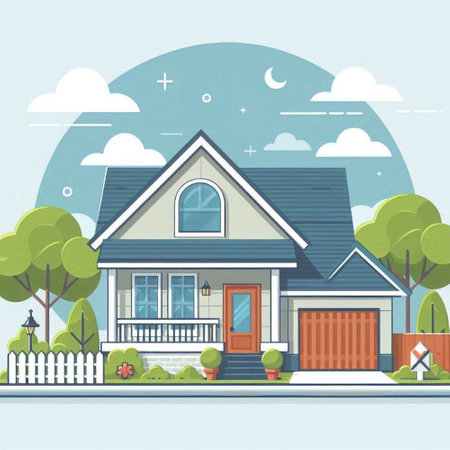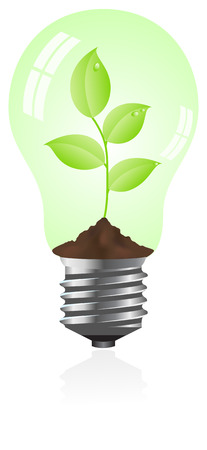1. Introduction to Smart Lighting Technology
Smart lighting technology is transforming the way we think about lighting in our homes and businesses across America. Unlike traditional lighting solutions that rely on manual switches and basic bulbs, smart lighting uses advanced technology to offer greater convenience, energy efficiency, and personalization. This new wave of lighting is not just about illumination—it’s about creating environments that fit our lifestyles and needs.
What Is Smart Lighting?
At its core, smart lighting refers to lighting systems that can be controlled remotely through apps, voice assistants like Alexa or Google Assistant, or automated sensors. These systems often use LED bulbs, which are more energy-efficient and longer-lasting than older incandescent or fluorescent options. Homeowners and business owners can adjust brightness, color temperature, and even set schedules for when lights turn on or off—all from their smartphones or with a simple voice command.
How Smart Lighting Differs from Traditional Lighting
| Feature | Traditional Lighting | Smart Lighting |
|---|---|---|
| Control Method | Wall switches/manual controls | Apps, voice commands, automation |
| Energy Efficiency | Moderate (incandescent/fluorescent) | High (mostly LED) |
| Customization | Limited to bulb type and wattage | Adjustable brightness, color, scheduling |
| Integration with Other Devices | No integration | Works with smart home ecosystems (security, thermostats) |
| Lifespan | Shorter (especially incandescents) | Longer (LEDs last years) |
| User Experience | Basic on/off functionality | Personalized settings for comfort and ambiance |
The American Context: Why It Matters Now
With the rise of smart homes in the U.S., more people are looking for ways to simplify daily routines while saving on energy costs. In both residential and commercial spaces, smart lighting offers flexibility for busy lifestyles—imagine never having to worry if you left the lights on when you leave for work. Businesses can create dynamic environments that improve productivity or customer experience. As technology becomes more affordable and accessible, smart lighting is quickly becoming a must-have feature in modern American living.
2. Energy Efficiency and Sustainability
Smart Lighting: A Game Changer for Energy Savings
Smart lighting technology is making a huge impact when it comes to energy efficiency in American homes and businesses. Unlike traditional lighting, smart systems use advanced sensors, timers, and automation to adjust light levels based on occupancy, daylight availability, or user preferences. This means lights are only on when needed, which cuts down on unnecessary electricity use and helps lower utility bills.
Eco-Friendly Practices Built Into Modern Lighting
Modern smart lighting isn’t just about saving money—it’s also about protecting the planet. Many of these systems use LED bulbs, which last longer and consume far less energy than older incandescent or fluorescent options. Additionally, smart lighting can integrate with other home technologies (like HVAC systems) to optimize overall energy use throughout your home.
How Smart Lighting Contributes to Sustainability
| Feature | Environmental Benefit |
|---|---|
| LED Technology | Uses up to 80% less energy and reduces landfill waste due to longer lifespan |
| Motion Sensors | Automatically turns off lights in empty rooms, reducing wasted power |
| Dimming Capabilities | Lowers electricity use when full brightness isnt necessary |
| Daylight Harvesting | Takes advantage of natural sunlight, minimizing artificial lighting needs |
Meeting U.S. Environmental Standards
The United States is moving toward stricter energy codes and environmental standards, such as California’s Title 24 or ENERGY STAR certifications. Smart lighting solutions help homeowners and businesses stay compliant by making it easy to meet these evolving regulations. Automated monitoring and reporting features also help track energy consumption so you can make informed choices that support both your wallet and the environment.

3. Integration with Smart Home Ecosystems
Smart lighting is changing the way American households interact with their homes. One of the biggest trends in smart lighting technology is its seamless integration with popular smart home platforms. Whether you are using Amazon Alexa, Google Home, or Apple HomeKit, connecting your lights to these systems makes daily life more convenient and secure.
How Smart Lighting Works with Major Platforms
Smart lights can be controlled by voice commands, smartphone apps, or even set to follow schedules and routines. Here’s a quick look at how they work with the top smart home ecosystems in the U.S.:
| Platform | Integration Features | User Benefits |
|---|---|---|
| Amazon Alexa | Voice control, routines, remote access, group controls | Hands-free use, easy automation, energy savings |
| Google Home | Voice activation, scene setting, app integration | Simplified control, personalized settings, multi-device coordination |
| Apple HomeKit | Siri voice commands, secure data encryption, automation triggers | Privacy-focused control, family sharing, advanced automations |
Enhancing Convenience in Everyday Life
Imagine walking into your house with your hands full and simply saying, “Alexa, turn on the kitchen lights.” Or scheduling your bedroom lights to slowly brighten each morning as part of your wake-up routine. With smart lighting integrated into your home ecosystem, all these scenarios become effortless.
Boosting Security Through Smart Lighting Integration
Beyond convenience, smart lighting also enhances home security. You can set your lights to turn on and off while you’re away to make it look like someone’s home—deterring potential intruders. Some systems even let you link motion sensors to your lights so they automatically illuminate dark entryways when movement is detected.
4. Personalization and Adaptive Lighting
Lighting That Fits Your Life
One of the most exciting trends in smart lighting technology is personalization. Today’s American homes are all about comfort, convenience, and making spaces feel just right for every moment. Smart lighting now goes far beyond simple on-off switches or dimming. It adapts to your lifestyle, your schedule, and even your mood.
Circadian Rhythm Features
Many new smart lighting systems include circadian rhythm features. These lights automatically adjust their color temperature and brightness throughout the day to match your natural body clock. For example, you might get cooler, brighter light in the morning to help you wake up and stay energized, then warmer, softer light in the evening to help you relax before bedtime. This kind of adaptive lighting not only makes your home more comfortable but can also support better sleep and overall well-being.
How Circadian Lighting Works
| Time of Day | Light Color | Brightness Level | Purpose |
|---|---|---|---|
| Morning (6am–10am) | Cool White (5000K–6500K) | High | Energize & Wake Up |
| Noon (10am–2pm) | Neutral White (4000K–5000K) | Medium-High | Focus & Productivity |
| Afternoon (2pm–6pm) | Soft White (3500K–4000K) | Medium | Sustain Energy |
| Evening (6pm–10pm) | Warm White (2700K–3000K) | Low-Medium | Relax & Unwind |
| Night (10pm–6am) | Very Warm (2200K–2700K) | Very Low/Nightlight Mode | Prepare for Sleep |
User-Centric Ambiance Settings for Every Occasion
Smart lighting gives Americans more ways than ever to create the perfect ambiance for any activity. Whether you’re hosting a backyard barbecue, enjoying a family movie night, or working from home, you can set scenes that fit the mood with just a tap on your phone or a voice command.
Popular Personalized Lighting Scenes in American Homes
| Scene Name | Description |
|---|---|
| Dinner Party | Softer, warmer lights for a cozy dining experience with friends or family. |
| Focus Time | Crisp, bright lighting to boost concentration during work or study hours. |
| Movie Night | Dimmed lights with subtle hues for a comfortable home theater vibe. |
| Wake-Up Routine | Lamps gradually brighten with cool tones to mimic sunrise and gently wake you up. |
| Relaxation Hour | Pale amber or pinkish lights for reading or winding down after a busy day. |
The Future is Tailored to You
The latest smart lighting systems are designed with American lifestyles in mind—busy schedules, diverse activities, and the need for flexible comfort at home. As these technologies keep advancing, expect even more intuitive options that make your living space truly one-of-a-kind.
5. Challenges and Future Outlook
Current Challenges Facing Smart Lighting
While smart lighting technology continues to evolve and gain popularity across the United States, a few key challenges still hold some homeowners and businesses back from fully embracing it. Here’s a closer look at what’s standing in the way:
| Challenge | Description |
|---|---|
| Privacy Concerns | Smart lighting often relies on apps, voice assistants, and cloud services. Many users are worried about how their data is collected, shared, or potentially exposed to hackers. |
| Interoperability | With so many brands and platforms out there, it can be tough to make sure all your smart devices work seamlessly together. Different systems may not “talk” to each other smoothly. |
| Initial Investment Costs | Smart bulbs, switches, and control hubs usually cost more upfront than traditional lighting. Although they offer savings over time, the initial price tag can be a barrier for some. |
Anticipated Innovations in Smart Lighting
The future looks bright as manufacturers and tech companies address these concerns with innovative solutions tailored for the U.S. market:
- Better Security Features: Newer smart lighting products are rolling out with advanced encryption and privacy tools that give users more control over their personal data.
- Universal Compatibility: Industry standards like Matter are making it easier for different brands and platforms to work together, simplifying setup for everyone.
- Affordable Options: As the technology matures and demand increases, prices are gradually dropping—making smart lighting accessible to more people.
- Sustainable Designs: Energy efficiency remains a top priority, with future products focusing on eco-friendly materials and lower power consumption.
The Future Trajectory of Smart Lighting in the U.S.
The U.S. smart lighting market is expected to grow rapidly as homes become smarter and energy regulations become stricter. We can expect to see more integration with home automation systems, improvements in voice and gesture controls, and greater emphasis on customizable lighting experiences that support wellness and productivity. As these trends take shape, smart lighting will likely move from being a luxury feature to a standard element in American homes and businesses.


